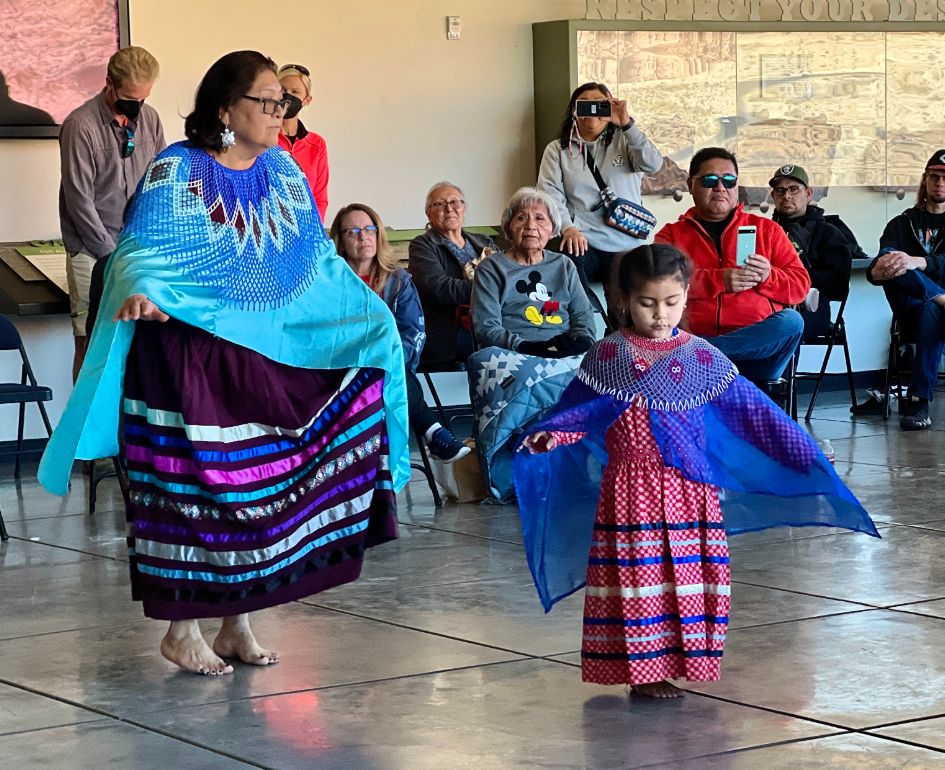
Red Rock Canyon is a testament to the rich tapestry of Native American history that has woven its way through the vibrant landscape of Southern Nevada. This national conservation area, located just a short drive from Las Vegas, showcases a stunning blend of colorful rock formations and mysterious canyons, each echoing the stories of its indigenous peoples.
As visitors wander through these sandstone bluffs and balancing rock formations, they are stepping back into a time when Native American tribes made this desert ecosystem their home.
Native American Tribes Of Red Rock Canyon
Long before the advent of modern civilization, various Native American tribes inhabited the lands that are now known as Red Rock Canyon. Among these tribes were the Southern Paiute and the Mojave, who adapted remarkable ways of life centered around the unique challenges and bounties of the desert landscape.
The Southern Paiute, referred to as Nuwuvi, were known for their deep knowledge of the local flora and fauna. They utilized plants for both nutritional and medicinal purposes.
The Mojave, or Aha Makhav, thrived in the low desert areas, forming intricate social structures and trade routes extending across what is now Southern Nevada and beyond.
Historical Significance & Ancestral Traditions
Red Rock Canyon holds immense cultural significance for these tribes, as it was a place of habitation and a site for spiritual practices and rituals. The surrounding canyons provided ideal locations for ceremonial activities, often marked by painted faces on colorful rock surfaces.
Archaeological findings in the area have revealed petroglyphs and pictographs, telling the stories and symbols of past generations.
Impact Of European Settlers
The arrival of European settlers in the region marked a significant turning point in Native American history at Red Rock Canyon. These settlers, primarily from Los Angeles and beyond, disrupted the traditional ways of life for these tribes.
Traders and travelers used the area as an important American trade route, leading to increased interactions and tensions between Native Americans and newcomers. Many tribes were forced to adapt or relocate, leaving behind small settlements and traces of their once flourishing societies.
The Role Of The Civilian Conservation Corps
In the 1930s, the Civilian Conservation Corps (CCC) played a pivotal role in shaping the landscape of Red Rock Canyon for modern visitors. While their work focused on creating hiking maps and developing climbing areas, it also helped in preserving and highlighting the natural beauty and historical aspects of the park.
The CCC’s efforts ensured the preservation of many cultural and natural resources, which remain a draw for canyon visitors today.
Exploring Historical Sites
Red Rock Canyon offers an array of historical sites that showcase the rich indigenous heritage of the region. Notable locations include ancient petroglyph sites and remnants of early tribal lands.
Visitors can explore these areas while appreciating the stunning vistas and experiencing the desert’s vibrant biodiversity. Thanks to the park’s superintendent’s orders, many areas are preserved to maintain their cultural significance and ensure their protection for future generations.
Understanding The Desert Ecosystem
The desert ecosystem of Red Rock Canyon is a marvel in itself, supporting a wide array of native flora and fauna. This includes species that range from the beautiful desert wildflowers to the resilient bighorn sheep. Understanding the delicate balance of this ecosystem offers valuable insights into the ways Native American tribes managed to thrive in such seemingly inhospitable environments.
The Balance Of Conserving Cultural Significance & Natural Beauty
As a national conservation area, Red Rock Canyon plays a crucial role in cultural preservation while offering recreational opportunities for nature enthusiasts. Visitors can engage in a variety of activities, from canyon adventures and hiking to wildlife and environmental conservation efforts and educational programs to learn more.
The park’s commitment to securing its cultural significance ensures that the historical narratives of Native American tribes are recognized and respected.
Participating In Cultural Preservation
The preservation of Indigenous heritage does not solely lie in the hands of the park authorities; educational groups, eco-conscious travelers, and nature enthusiasts all play a part.
Engaging with the history and culture of Native American tribes at Red Rock Canyon can take many forms — from participating in guided tours that highlight historical sites to supporting conservation efforts that protect the area’s unique biodiversity.
- Join educational programs and guided hikes offered at the park to learn more about Native American history and the canyon’s natural features.
- Support local preservation initiatives that focus on cultural and environmental conservation.
- Respect marked and sacred sites, ensuring they remain undisturbed for future generations.
Indigenous Heritage & Modern Appreciation
The deep appreciation of the Indigenous heritage of Red Rock Canyon reflects a broader understanding and respect for the diverse cultural narratives that have shaped American history. As we explore these lands, recognizing and honoring the narratives of Native American tribes enhances our connection to this incredible landscape.
Experience The Past, Preserve The Future
At Red Rock Canyon, the past comes alive, inviting visitors to immerse themselves in a world rich with cultural significance and natural wonder. By exploring this magnificent conservation area, you not only embark on an unforgettable rock canyon adventure but also contribute to the vital task of cultural preservation.
Whether you’re an enthusiastic hiker or a curious history buff, the stories and landscapes of Red Rock Canyon are waiting to inspire you. Join us in Las Vegas and Southern Nevada to deepen your connection with this extraordinary environment.
Visit the Southern Nevada Conservancy to learn more about how you can make a difference in preserving Indigenous heritage and protecting our natural world.



